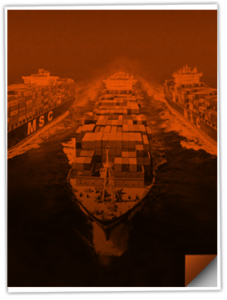The International Ship and Port Facility Security (ISPS) Code is a globally recognized framework established by the International Maritime Organization (IMO) to enhance security for ships, cargo, and port facilities. Implemented under SOLAS (Safety of Life at Sea) Chapter XI-2, the ISPS Code aims to detect and deter security threats within the maritime industry, ensuring safer international shipping and trade operations.
The ISPS Code applies to cargo ships (500 tonnage and above) on international voyages, passenger ships, port facilities, and 3PL providers involved in port operations and cargo handling.
Key Objectives of the ISPS Code
- Establishing a standardized security framework for ships and port facilities.
- Enhancing communication and cooperation between governments, port authorities, and shipping companies.
- Identifying and mitigating security risks and vulnerabilities in maritime operations.
- Implementing security measures to prevent smuggling, piracy, and terrorism.
- Ensuring compliance with international trade security requirements, reducing risks for shippers and logistics providers.
Why the ISPS Code Matters for importers
For importers, compliance with the ISPS Code is crucial to maintaining secure, efficient, and compliant international trade operations. Adhering to ISPS regulations can help prevent security breaches, minimize delays, and ensure the seamless movement of goods across global supply chains.
ISPS Code Compliance Requirements
To meet ISPS Code requirements, maritime and logistics professionals must adhere to several key measures:
1. Ship and Port Security Plans (SSP & PFSP)
Every ship operator and port facility must develop and maintain a security plan based on a thorough risk assessment. These plans outline:
- Security measures to prevent unauthorized access.
- Procedures for handling security threats and incidents.
- Designation of Ship Security Officers (SSO) and Port Facility Security Officers (PFSO).
2. Security Levels and Alerts
ISPS establishes three security levels:
- Level 1 (Normal): Standard security measures are in place.
- Level 2 (Heightened): Increased security measures due to an identified threat.
- Level 3 (Exceptional): Highest security measures implemented when a security incident is imminent.
3. Screening and Access Control
- Strict cargo inspections to prevent illegal activities such as cargo theft, smuggling, and terrorism.
- Access control measures at ports to restrict unauthorized personnel.
- Advanced cargo tracking and monitoring to enhance supply chain security.
4. Security Drills and Training
- Regular security drills for port workers, freight forwarders, and customs brokers to stay prepared for security threats.
- Mandatory training for security officers involved in port and ship operations.
5. Electronic Security Systems
- Use of automated identification systems (AIS) for vessel tracking.
- Implementation of container security devices (CSDs) to monitor cargo integrity.
- Integration of customs clearance technology to streamline cross-border trade security.



